Black Friday and Cyber Monday (BFCM) is just around the corner and many shoppers have already started thinking about the deals they hope to snag during this heavily anticipated weekend of sales. While your brand is busy preparing special discounts and designing eye-catching marketing campaigns, it’s important not to forget about improving your online wishlist experience during the buildup to Black Friday.
A good experience with your online store’s wishlist is extremely important in preparation for BFCM — wishlists can drive sales, generate increased customer engagement, foster retention, and reduce shopping cart abandonment. In this post, we’ll explore each of these benefits and take a look at six brands that have created top-notch digital wishlist experiences.
What Is a Wishlist?
A wishlist allows shoppers to mark and keep track of products they’re interested in, but are not ready to commit to purchasing in that session. It ensures that they don’t forget about a desired product, but encourages them to come back later and move it to their cart when ready.
The upside to wishlists is huge for BFCM shoppers who are waiting for big discounts and special deals to complete their purchase — with a wishlist in hand, these shoppers can keep intent high while still having flexibility before they purchase.
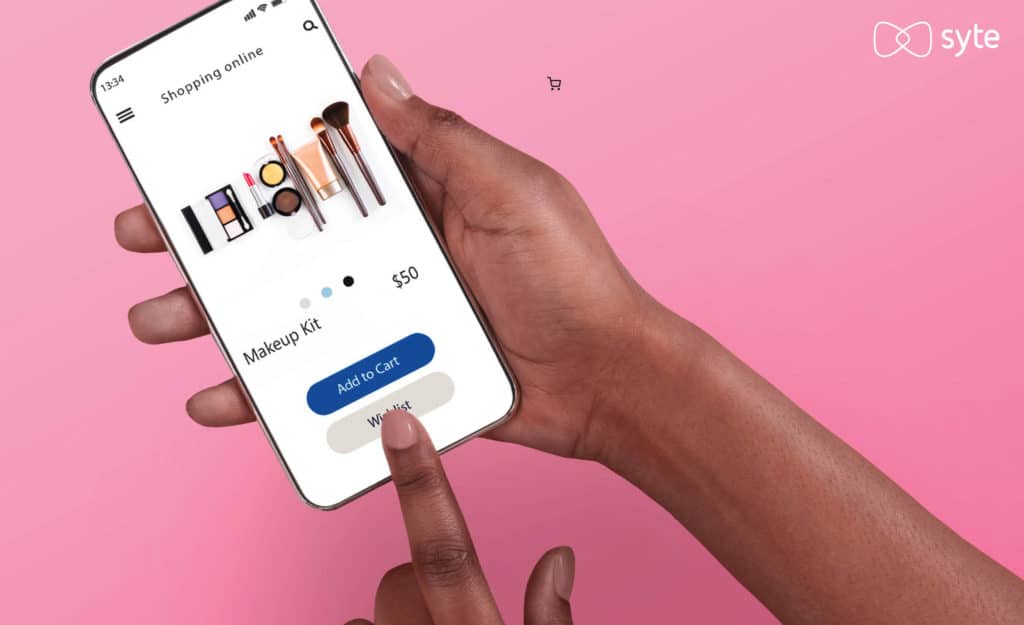
On the other hand, a wishlist can be a double edged sword — if brands and retailers don’t actively campaign to shoppers who have created a wishlist, they may not come back and actually convert. That’s why it’s so critical to create an excellent online wishlist experience. We’ll give you some practical tips on how to achieve this in a moment. First, let’s take a closer look at why digital wishlists are so important.
Top Benefits of Wishlists for Brands and Retailers
Wishlists are a powerful and effective tool for eCommerce websites. In fact, 40% of shoppers surveyed by Google said “their shopping experience would be better if retailers offered a wishlist where they can save items they’re interested in.” A well-executed wishlist not only gives customers an easy way to remember what they want, it also gives retailers access to important data and additional marketing opportunities. Here are four of the top ways your brand can benefit from adding a wishlist to your online store:
Increase conversion with targeted ads

When you know what your shoppers want, you can leverage that information to design targeted ads and email campaigns to bring shoppers back to your site and, ultimately, convert. Some of the most effective ways to do that include letting them know if an item has gone on sale, if it is low in stock, or if their preferred color/size has become available. This gives you a chance to foster a sense of urgency for shoppers to complete the purchase.
For example, you can send a notification saying “Only 5 left!” and this might be the push some shoppers need to add an item to their cart and complete the transaction. Alternatively, if an item, color, or size is no longer available, you can use this as an opportunity to recommend related products that are in stock and similar in price range. Doing so can inspire shoppers to purchase items they didn’t even know you had — which can both drive sales and improve the entire user experience.
Anticipate stock levels and effective price points with wishlist data

The data you collect from customer wishlists can be extremely useful when it comes to setting price points and anticipating necessary stock levels. Let’s break it down:
- If a very low percentage of shoppers are moving their wishlist items into their shopping carts despite retargeting efforts, or even if they continuously visit the site but don’t convert, this can alert you that something about your price point isn’t right. Take this opportunity to do some competitor research and find out if others in your industry are offering the same product at a significantly lower rate. If a shopper thinks they can get a better deal elsewhere, they will never move that item out of their wishlist. To avoid this scenario, try experimenting with different price points or special offers to see what will make them convert.
- If a specific item shoots up in wishlist popularity in the next few weeks, it’s a good sign that people are doing their research and preparing for BFCM. That means they are highly likely to purchase that item for themselves or a loved one in November. When you collect data like this, you can use it to determine whether or not you have enough product in stock and if it makes sense to order more.
Encourage engagement and foster retention online

Wishlists can encourage shoppers to sign up for an account on your site and opt-in to email notifications. This gives you the opportunity to promote new products and communicate seasonal deals. Additionally, if you have a company blog, you can share interesting articles or industry trends. You can also make sure shoppers are aware of your various social media channels and even offer promotions for following your company online. All of these actions give shoppers a reason to return to your site and, ultimately, convert.
Reduce the issue of shopping cart abandonment
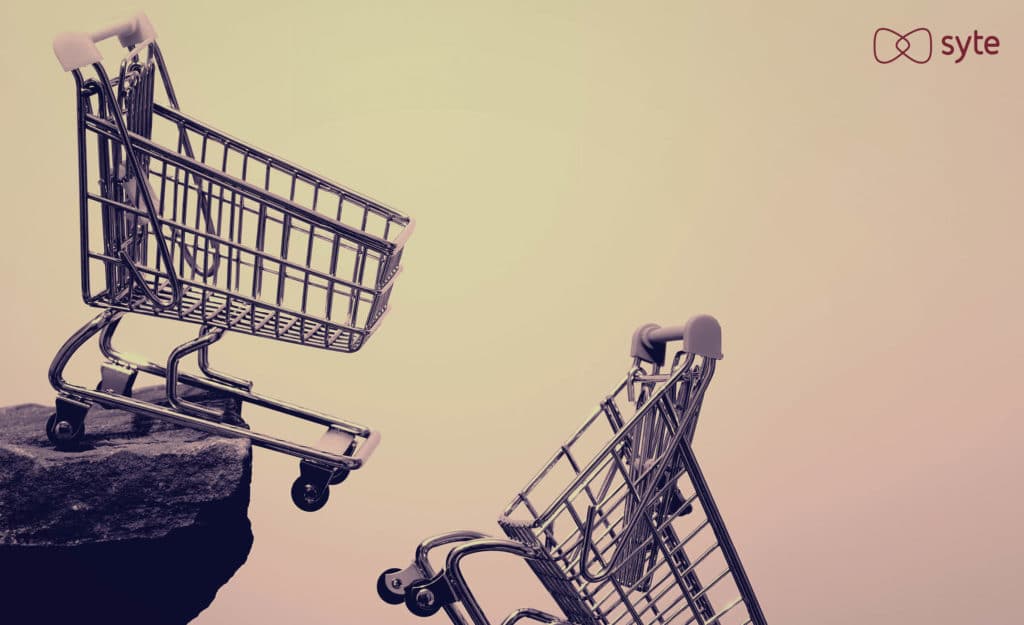
This is an extremely important metric for online retailers. When shoppers add items to their cart but leave the site before completing a purchase, it is measured as lost revenue. Oftentimes this happens because of poor UX at checkout, but it can also happen when shoppers simply need a place to save items while they do comparison shopping. By providing a wishlist option, you still give shoppers a place to save items of interest while significantly reducing your shopping cart abandonment rate. This in turn reduces the amount of revenue you’re leaving on the table.
Best BFCM Online Shopping & Wishlist Experiences
There are many different ways to set up your digital shopping carts and wishlists. Here are our top picks of some of the best curated online shopping and wishlist experiences out there.
Target: Shareable wishlists
Target’s website allows shoppers to save specific products as “Favorites”, which can then be shared with friends or family — either as individual items or as a complete list. This unique ability to share a wishlist is a great feature to have available for BFCM shoppers. Many people use this time to buy Christmas and holiday gifts for their loved ones, and being able to see what their friends and family actually want makes it much easier to convert new customers. The Favorites feature is available to everyone who signs up for an account on the Target website. When shoppers sign up, they also receive additional benefits such as information on COVID-safe no-contact pickup and money-saving deals through Target Circle.
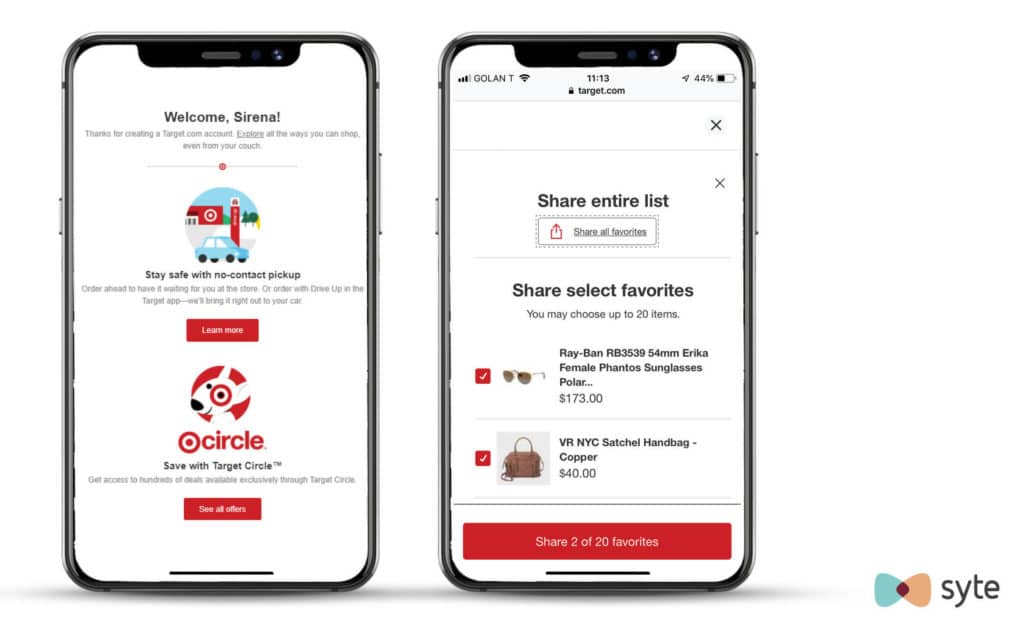
Garage Clothing: A smarter wishlist CTA
When you see an item you like on Garage Clothing, you can click on the heart directly next to the Add to Bag button to save it to your wishlist. This icon is easily recognizable and conveniently located above the fold so you don’t have to scroll down the page looking for it, yet it’s not distracting from the Add to Bag button itself. The site also immediately alerts shoppers to sizes that are out of stock — and provides an option to get an email notification when that item is back in stock. All you have to do is click on the out of stock size and a popup will open asking you to enter your email address. It’s a simple solution that improves the shopping experience for the potential customer, while also adding another contact to the retailer’s email marketing list.
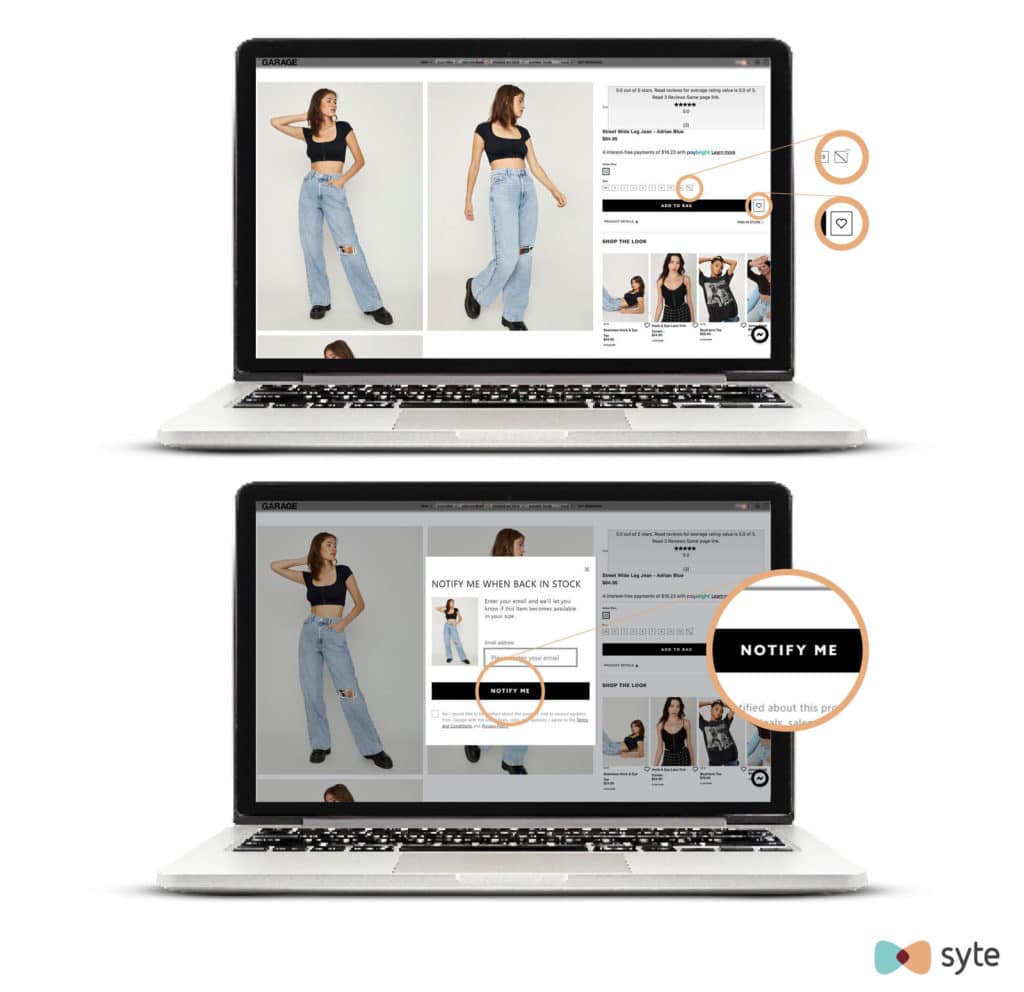
Shein: Reduce dead ends with similar items
One of the most frustrating experiences a shopper can have on Black Friday weekend is logging into their wishlist and finding that an item they really want is already sold out. When a shopper hits a dead end like this, smart brands and retailers will offer an alternate path to keep the shopping journey going. Shein does this extremely well with its mobile app. Instead of simply greying out a wishlist item that is no longer available, they offer a Find Similar button directly over the product image. When you click on this button, it takes shoppers to a new page created especially for that individual with suggestions for items that are similar in design, material, and price.
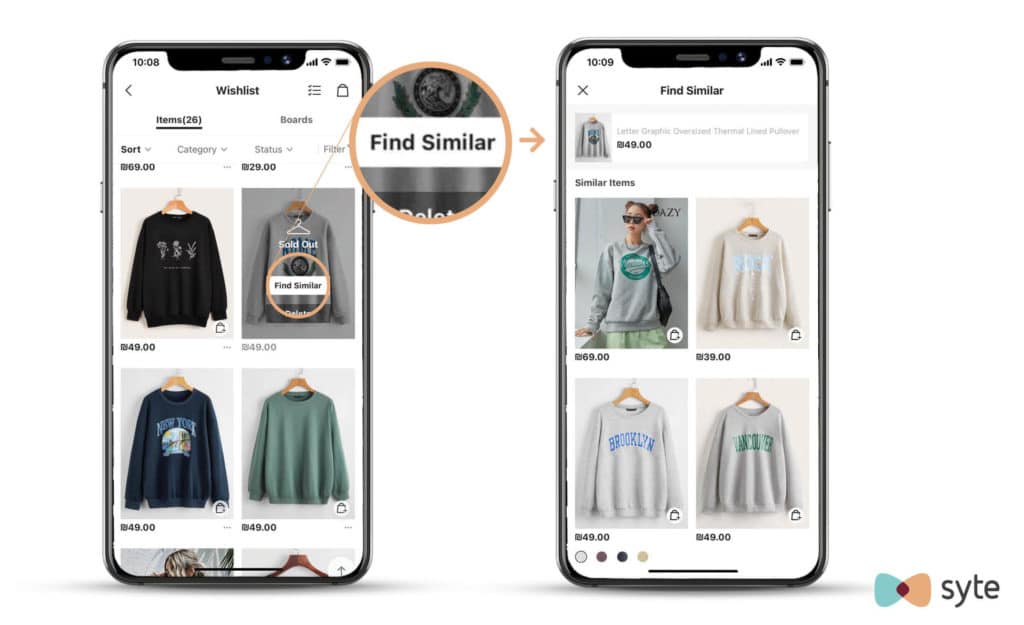
Farfetch: Build complete outfits from wishlist items
When shoppers create a wishlist on Farfetch, they will receive short email reminders to go back and purchase those items. One of the unique ways Farfetch does this is by building personalized outfit recommendations from favorited items in an individual’s wishlist. For example, if a shopper has added a few different blouses, skirts and pants to their wishlist, Farfetch will select a single top and bottom that work together and send that complete outfit directly to the shopper’s inbox. This kind of targeted marketing can give an unsure shopper the reassurance they need to complete a full outfit purchase. This strategy not only improves the shopping experience for customers, it also increases the Average Order Value (AOV) for brands and retailers alike.
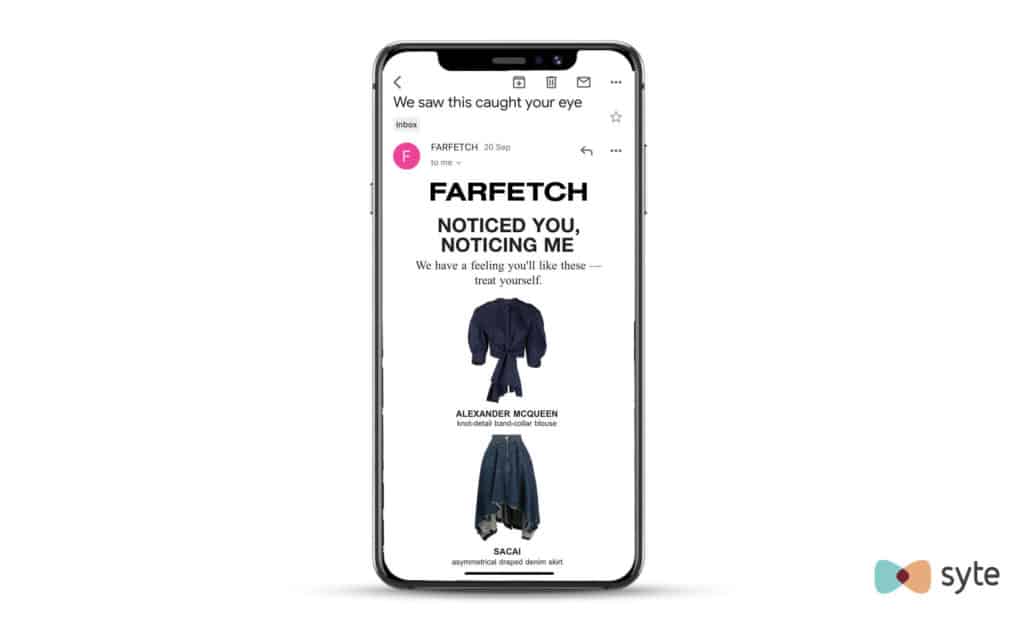
ASOS: Friction-free wishlists
ASOS allows shoppers to add items to their wishlist without signing in or creating an account. Saved items will remain visible in the wishlist every time the shopper returns to the website, so long as they visit from the same device. This is one great way to encourage new shoppers to explore your site and keep track of items of interest. Some shoppers are turned off by the time it takes to set up an account if they are just doing an initial search, so ASOS hits the nail on the head by removing this friction. The site also notifies shoppers when an item is low in stock, which can encourage motivated shoppers to check out before losing their chance at owning a product they really want.
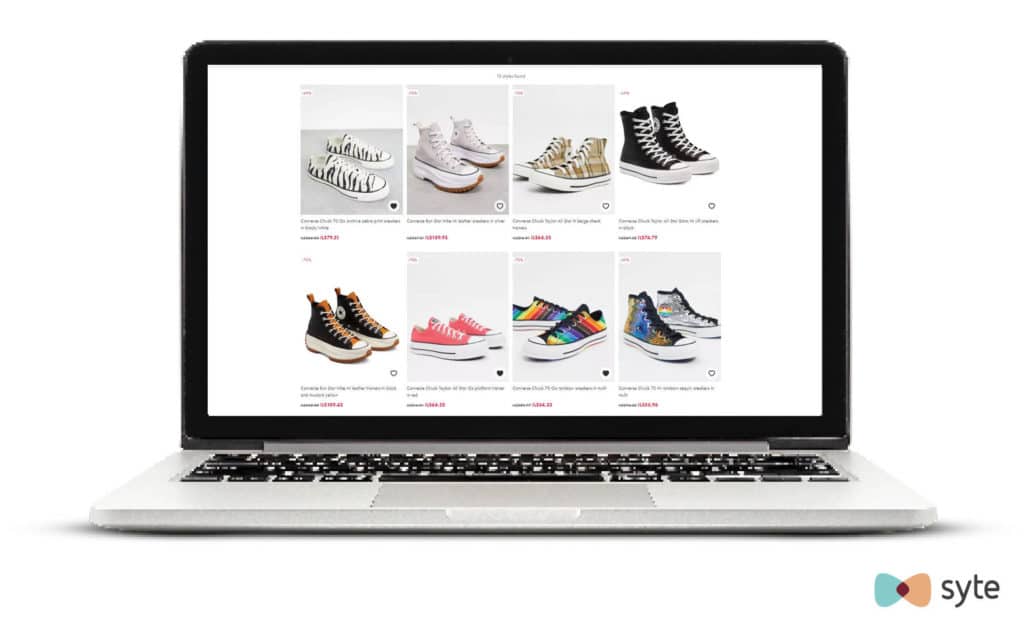
Abercrombie & Fitch: Improved display for saved items
Abercrombie has a very user-friendly interface that immediately confirms when a shopper clicks on the “save for later” button. Once you click on this button, it changes to say “saved!” This makes it extremely clear that your choice has been favorited. The “saved” icon remains visible anytime you hover over an item while you’re scrolling through a product listing page (PLP), which also improves the UX because you can see favorite items without having to leave a PLP and go to the wishlist itself. While A&F also allows shoppers to add items to their wishlist without creating an account, they offer additional benefits to those who do sign up, such as saving their list for an extended period of time.
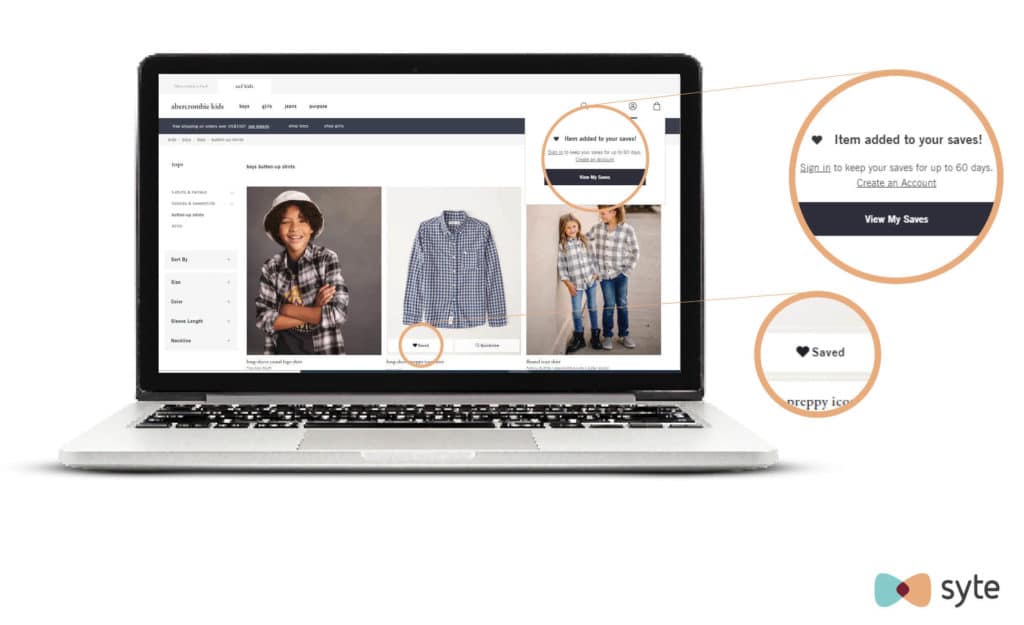
Do You Need a Wishlist?
Successful implementation of a wishlist on your eCommerce website offers a mutually beneficial solution for both consumers and retailers. Shoppers have a dedicated space to save their items and retailers get the data they need to boost sales, engagement, and retention.